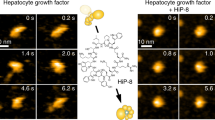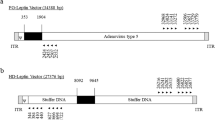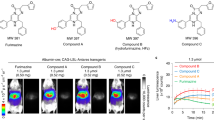Abstract
Current gene therapy protocols often suffer from an inability to monitor the site, level and persistence of gene expression following somatic DNA delivery. Herpes simplex virus 1 thymidine kinase (HSV1-tk) is currently under intensive investigation as a reporter gene for in vivo imaging of reporter gene expression. The presence of the HSV1-tk reporter gene is repetitively and non-invasively monitored by systemic injection of positron-emitting, radionuclide-labeled thymidine analogues or acycloguanosine HSV1-TK substrates and subsequent detection, by positron emission tomography, of trapped, phosphorylated product. To improve the efficacy of the HSV1-tk PET reporter gene system, both alternative substrates and mutations in the HSV1-tk gene have been described. We used a replication defective adenovirus to deliver the HSV1-sr39tk mutant enzyme and the wild-type HSV1-tk enzyme to mice. HSV1-sr39TK demonstrates greater sensitivity than wild-type HSV1-TK enzyme in vivo, using 9-[(4-[18F]fluoro-3-hydroxymethylbutyl)guanine as probe, following adenovirus-mediated hepatic expression in mice. Using this adenoviral delivery system, the location, magnitude and duration of HSV1-sr39tk PET reporter gene expression could be non-invasively, quantitatively and repetitively monitored for over 3 months by microPET.
This is a preview of subscription content, access via your institution
Access options
Subscribe to this journal
Receive 12 print issues and online access
$259.00 per year
only $21.58 per issue
Buy this article
- Purchase on Springer Link
- Instant access to full article PDF
Prices may be subject to local taxes which are calculated during checkout






Similar content being viewed by others
References
Ray P et al. Monitoring gene therapy with reporter gene imaging Semin in Nucl Med 2001 31: 312–320
Naylor LH . Reporter gene technology: the future looks bright Biochem Pharmacol 1999 58: 749–757
Yang M et al. Whole-body optical imaging of green fluorescent protein-expressing tumors and metastases Proc Natl Acad Sci USA 2000 97: 1206–1211
Contag CH, Jenkins D, Contag PR, Negrin RS . Use of reporter genes for optical measurements of neoplastic disease in vivo Neoplasia 2000 2: 41–52
Rogers BE, Zinn KR, Buchsbaum DJ . Gene transfer strategies for improving radiolabeled peptide imaging and therapy Q J Nucl Med 2000 44: 208–223
Zinn KR et al. Noninvasive monitoring of gene transfer using a reporter receptor imaged with a high-affinity peptide radiolabeled with 99mTc or 188Re J Nucl Med 2000 41: 887–895
Cherry SR et al. MicroPET: a high resolution PET scanner for imaging small animals IEEE Trans Nucl Sci 1997 44: 1161–1166
MacLaren DC et al. Repetitive, non-invasive imaging of the dopamine D2 receptor as a reporter gene in living animals Gene Ther 1999 6: 785–791
Gambhir SS et al. Imaging transgene expression with radionuclide imaging technologies Neoplasia 2000 2: 118–138
Herschman HR et al. Seeing is believing: non-invasive, quantitative and repetitive imaging of reporter gene expression in living animals, using positron emission tomography J Neurosci Res 2000 59: 699–705
Sadelain M, Blasberg RG . Imaging transgene expression for gene therapy J Clin Pharmacol 1999 39 (Suppl): 34S–39S
Tjuvajev JG et al. A general approach to thenon-invasive imaging of transgenes using cis-linked herpes simples virus thymidine kinase Neoplasia 1999 1: 315–320
Tjuvajev JG et al. Imaging herpes virus thymidine kinase gene transfer and expression by positron emission tomography Cancer Res 1998 58: 4333–4341
Gambhir SS et al. Imaging adenoviral-directed reporter gene expression in living animals with positron emission tomography Proc Natl Acad Sci USA 1999 96: 2333–2338
Gambhir SS et al. Imaging of adenoviral directed herpes simplex virus Type 1 thymidine kinase reporter gene expression in mice with ganciclovir J Nucl Med 1998 39: 2003–2011
Green LA et al. Indirect monitoring of endogenous gene expression by Positron Emission Tomography (PET) imaging of reporter gene expression in transgenic mice Mol Imag Biol 2002 4: 71–81
Black ME, Newcomb TG, Wilson H-MP, Loeb LA . Creation of drug-specific Herpes Simplex Virus type 1 thymidine kinase mutant for gene therapy Proc Natl Acad Sci USA 1996 93: 3525–3529
Gambhir SS et al. A mutant herpes simplex virus Type 1 thymidine kinase reporter gene shows improved sensitivity for imaging reporter gene expression with positron emission tomography Proc Natl Acad Sci USA 2000 97: 2785–2790
Alauddin MM, Conti PS . Synthesis and preliminary evaluation of 9-(4-[18F]-fluoro-3-hydroxymethylbutyl)guanine ([18F]FHBG): a new potential imaging agent for viral infection and gene therapy using PET Nucl Med Biol 1998 25: 175–180
Liang Q et al. Noninvasive, quantitative imaging, in living animals, of a mutant dopamine D2 receptor reporter gene in which ligand binding is uncoupled from signal transduction Gene Ther 2001 8: 1490–1498
Tjuvajev JG et al. Noninvasive imaging of herpes virus thymidine kinase transfer and expression: a potential method for monitoring clinical gene therapy Cancer Res 1996 56: 4087–4095
Jacobs A et al. Positron emission tomography-based imaging of transgene expression mediated by replication-conditional, oncolytic herpes simplex virus type 1 mutant vectors in vivo Cancer Res 2001 61: 2983–2995
Iyer M et al. 8-[18F]-Fluoropenciclovir: an improved reporter probe for imaging HSV1-tk reporter gene expression in vivo using positron emission tomography J Nucl Med 2001 42: 96–105
Alauddin MM et al. Synthesis of 9-[(3-[18F]fluoro-1-hydroxy-2-propoxy)methyl]guanine ([18F]FHPG): a potential imaging agent of viral infection and gene therapy using PET Nucl Med Biol 1996 23: 787–792
Alauddin MM et al. Evaluation of 9-[(3-[18F]-fluoro-1-hydroxy-2-propoxy)methyl] guanine ([18F]-FHPG) in vitro and in vivo as a probe for PET imaging of gene incorporation and expression in tumors Nucl Med Biol 1999 26: 371–376
Hospers GA et al. Monitoring of herpes simplex virus thymidine kinase enzyme activity using positron emission tomography Cancer Res 2000 60: 1488–1491
Hustinx R et al. Imaging in vivo herpes simplex virus thymidine kinase gene transfer to tumor-bearing rodents using positron emission tomography and [18F]FHPG Eur J Nucl Med 2001 28: 5–12
Brust P et al. Comparison of [18F]FHPG and [124/125]IFIAU for imaging herpes simplex virus type 1 thymidine kinase gene expression Eur J Nucl Med 2001 28: 721–729
Yaghoubi S et al. Human pharmacokinetic and dosimetry studies of [18F]-FHBG, a reporter probe for imaging herpes simplex virus type 1 thymidine kinase (HSV1-tk) reporter gene expression J Nucl Med 2001 42: 1225–1234
Christians FC et al. Directed evolution of thymidine kinase for AZT phosphorylation using DNA family shuffling Nat Biotechnol 1999 17: 259–264
Yu Y et al. Quantification of target gene expression by imaging reporter gene expression in living animals Nat Med 2000 6: 933–937
Krestel HE, Mayford M, Seeburg PH, Sprengel R . A GFP-equipped bidirectional expression module well suited for monitoring tetracycline-regulated gene expression in mouse Nucleic Acids Res 2001 29: E39
Gomez-Foix AM et al. Adenovirus-mediated transfer of the muscle glycogen phosphorylase gene into hepatocytes confers altered regulation of glycogen metabolism J Biol Chem 1992 267: 25 129–25 134
Graham FL, van der Eb AJ . A new technique for the assay of infectivity of human adenovirus 5 DNA Virology 1973 52: 456–467
Qi J et al. High-resolution 3D Bayesian image reconstruction using the microPET small-animal scanner Phys Med Biol 1998 43: 1001–1013
Acknowledgements
We thank Art Catapang, Raymond Basconcillo, Judy Edwards, Waldemar Ladno and ManKit Ho for technical assistance and Richard Leahy for consultation. This work was supported by Department of Energy award DE-FC03-87ER60615 (HRH, MEP, SSG, JRB, NS), NIH award P50 CA86306 (HRH, MEP, SSG, JRB, NS), NIH award R0-1 CA84572 (HRH) and NIH award R0-1 CA82214-01 (SSG).
Author information
Authors and Affiliations
Rights and permissions
About this article
Cite this article
Liang, Q., Nguyen, K., Satyamurthy, N. et al. Monitoring adenoviral DNA delivery, using a mutant herpes simplex virus type 1 thymidine kinase gene as a PET reporter gene. Gene Ther 9, 1659–1666 (2002). https://doi.org/10.1038/sj.gt.3301899
Received:
Accepted:
Published:
Issue Date:
DOI: https://doi.org/10.1038/sj.gt.3301899
Keywords
This article is cited by
-
Phase I Study of Noninvasive Imaging of Adenovirus-mediated Gene Expression in the Human Prostate
Molecular Therapy (2008)
-
Gene expression imaging by enzymatic catalysis of a fluorescent probe via membrane-anchored β-glucuronidase
Gene Therapy (2007)
-
Non-invasive in vivo optical imaging of the lacZ and luc gene expression in mice
Gene Therapy (2007)
-
In Vivo Bioluminescence Tumor Imaging of RGD Peptide-modified Adenoviral Vector Encoding Firefly Luciferase Reporter Gene
Molecular Imaging and Biology (2007)
-
Oncolytic adenoviruses – selective retargeting to tumor cells
Oncogene (2005)



